Fighting Father Dunne

Brief Synopsis
Cast & Crew
Ted Tetzlaff
Pat O'brien
Darryl Hickman
Charles Kemper
Una O'connor
Arthur Shields
Film Details
Technical Specs

Synopsis
As two of his men are about to destroy the sidewalk outside St. Louis' rundown News Boys' Home and Protectorate, contractor Fred Carver asks that a piece of the sidewalk containing two sets of footprints be preserved. Fred explains to his workers that one set of footprints was made by him as a small boy, and the other belonged to Father Peter J. Dunne, the founder of the Home. Fred then recalls how Father Dunne became the "patron saint" of newsboys everywhere: In the winter of 1905, orphan newsboys huddle together in the cold while waiting for newspapers to sell. During a grueling morning of work, two boys, Jimmy and Tony, go to see Father Dunne and tell him that Chip, another orphan newsboy, is sick. Concerned, Father Dunne asks Jimmy and Tony to take him to Chip's home, which turns out to be an unheated packing case. Father Dunne takes the ailing Chip to his sister Kate's house and calls a doctor. After the doctor prescribes bed rest for all three boys, Father Dunne convinces his reluctant brother-in-law, Emmett Mulvey, to sacrifice his only bed to the children. Father Dunne then informs his superior, Archbishop John Joseph Glennon, about the conditions under which the boys live and asks for help in creating a Home for them. Although the archbishop pledges to support Father Dunne's efforts, he also makes clear that the Catholic Church cannot donate any money to the cause. With that in mind, Father Dunne rents a shabby townhouse with help from lawyer Tom Lee and slowly begins to turn it into a home for Jimmy, Tony, Chip and two other boys. To supply the quickly expanding Home, the smooth-talking Father Dunne then cajoles various merchants into donating their goods to his cause. Father Dunne even talks Michael O'Donnell, a sour-faced businessman from Northern Ireland, into lending the Home his pony and cart, which some newsboys had earlier tried to steal. When one of the young thieves, Matt Davis, throws a brick through the Home's front window in order to "get in," Father Dunne welcomes him without question. Disturbed by the violence perpetrated on his boys by their older competitors, Father Dunne confronts Colpeck, the head of the Herald Sun 's circulation department, and his thug, "Gorilla" Blake. Although he is not intimidated by Colpeck and Blake, Father Dunne is unable to dissuade them from their strong-arm tactics. Taking Father Dunne's sermon on unity to heart, Matt, whose abusive, alcoholic father Steve has tried unsuccessfully to reclaim him, then organizes the boys into a group and uses O'Donnell's horse and cart to peddle their papers. Matt's strategy works at first, but Blake eventually orders several thugs to break up the group. During the ensuing mêlée, the horse is fatally injured and Jimmy's leg is crushed under the cart. After the guilt-ridden Matt runs away, Father Dunne asks O'Donnell, who owns the Herald building, to threaten the paper with eviction, and O'Donnell happily intimidates Colpeck into reforming. Months later, a still recuperating Jimmy beseeches Father Dunne to find Matt, and the priest agrees to search for him. Father Dunne locates Matt at his father's house, but is unable to break Steve's violent hold on the boy. Later, in an attempt to raise money to build a bigger Home, the priest hosts a "VIP" dinner. Because Father Dunne delivered the invitations at the last minute, however, only O'Donnell and Tom attend the function. Once again, O'Donnell comes to the priest's aid by offering to form a board of directors and use his financial clout to influence his peers. After the spacious, well-equipped new Home is built, a nattily dressed Matt returns for a visit. Although he claims to be doing well, Matt is nearly caught breaking into a store and runs to Father Dunne for help. Father Dunne encourages Matt to turn himself in, but a frightened Matt, imagining that the policeman in front of him is his drunken father, pulls a gun and shoots the officer. After Matt is sentenced to die, Father Dunne visits him in jail and listens to his pleas for mercy. Moved by the boy's words, the priest asks the governor to stop the impending execution, but the governor insists that justice be served. Although saddened by Matt's death, Father Dunne is comforted by the group of grateful boys who greet him later at the Home's door.

Director

Ted Tetzlaff
Cast
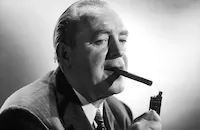
Pat O'brien

Darryl Hickman

Charles Kemper

Una O'connor

Arthur Shields
Harry Shannon
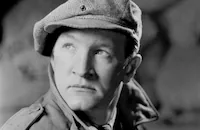
Joe Sawyer
Anna Q. Nilsson
Donn Gift

Myrna Dell
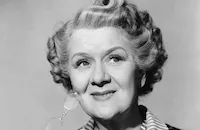
Ruth Donnelly
Jim Nolan
Billy Cummings

Billy Gray
Eric Roberts
Gene Collins
Lester Matthews

Griff Barnett
Rudy Whistler
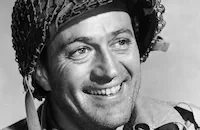
Don Haggerty
Ricky Berger
Albert Ray
Sonny Rees
Eugene Holland
Bobby Frasco
George Mcdonald
Vincent Graeff
Paul Dunn
Leon Burbank
Tex Swan
Harry Harvey
Buddy Roosevelt
Cedric Stevens
Sedal Bennett
Florence Clayton
Leo Kaye
Tom Coleman
Gerald Mackey
Ernie Adams
Dot Farley
Anne O'neal
Broderick O'farrell

Emmett Vogan
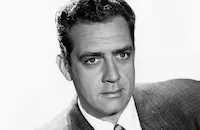
Raymond Burr
Charles Miller
Harry Hayden
Freddie Chapman
Phillip Morris

Frank Ferguson

Ellen Corby
Wes Hopper
Perc Launders
Stanley Blystone
Sid Wagner
Harold Smith
Ralph Brooks
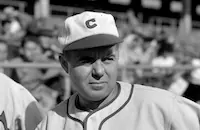
Ray Walker

Ralph Dunn
Chuck Flynn
Timmy Hawkins
Robert Bray
Robert Clarke
Jack Gargan
Crew
C. Bakaleinikoff
F. J. Barnes
Gordon Bau
Eugene Busch
Russell A. Cully
Albert S. D'agostino
Frank Davis
George E. Diskant
Jack J. Gross
Walter E. Keller
Terry Kellum
Frederic Knudtson
Adolph Kuri
John Pommer
Martin Rackin
William Rankin
Phil L. Ryan
Frank Sarver
Maurice Scott
Darrell Silvera
John Temple
Roy Webb
R. P. Weston

Videos
Movie Clip


Film Details
Technical Specs

Articles
Fighting Father Dunne
By Frank Miller

Fighting Father Dunne
Quotes
Trivia
Notes
The working titles of this film were Father Dunne's Newsboys Home and Father Dunne's Home. The film's opening credits include the following written foreword: "This is a story about a man who lived in St. Louis. It is also a tribute to him and what he stood for. The conditions that Father Dunne helped alleviate no longer exist in St. Louis, or in any other city...." Although the character played by Harry Shannon is listed as "John Lee" in the onscreen credits, he is called "Tom Lee" in the film. According to Hollywood Reporter, Phil L. Ryan Productions, which was producer Ryan's company, sold the rights to the film's story for $50,000, plus a percentage of the profits. RKO production files contained at the UCLA Arts Library-Special Collections note that Roddy McDowall tested for a role in the production. A September 1946 Los Angeles Examiner news item noted that producer Jack Gross was planning to shoot some scenes in St. Louis in February 1947, but no evidence that filming was done there has been found. Reviewers noted the similarity between this film and M-G-M's 1938 hit movie Boy's Town, which chronicled the founding of Father Edward Flanagan's home for juvenile delinquents in Omaha, NE (see AFI Catalog of Feature Films, 1931-40; F3.0465). According to Los Angeles Times, in April 1950, Matthew L. Davis of St. Louis lost a $300,000 lawsuit against RKO after a federal court decided that his reputation had not been damaged by this film. Davis lived at the News Boys' Home as a child and, after the picture was released, became jokingly known as "Killer Davis."














